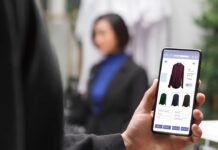New research from online retail experts Webloyalty launches today – looking into the science of shopping and revealing the six ways that online retailers encourage consumers to part with their cash online. This is more important than ever
The last month has seen record numbers of people shopping online for the first time – with over 600,000 new customers in the first week of lockdown alone* – but with competition so high, what strategies are retailers using to get us to part with our cash? The report, compiled in partnership with behavioural specialists London Economics, explores the theory behind the most common conversion strategies used by brands online to get customers to spend and how to retain them over the long-term. The Office for National Statistics recently revealed that even over the last decade there had been a 21% increase** in the number of people who shop online, meaning that four out of five (82%) of us now spend online.

Webloyalty’s research examined the behavioural economics theories that are driving consumer behaviour and how common they are across the UK’s top 50 retailers, in order to reveal which tactics designed to get consumers to spend were the most popular:
Channel Factors – used by 98% of the top 50 UK retailers
- What is it? Making processes like purchasing seem simple and uncomplicated
- How retailers apply it:
- Retailers will let you know up-front that a process is simple, bragging that you can complete a process ‘in less than five minutes’ or ‘in one quick step’
- Retailers will also let you know upfront what to expect ‘Click, Pay, Enjoy’ so the consumer doesn’t talk themselves out of something they might assume will be a hassle
- Online shopping often gives you quick hyperlinked words, so the process seems simple and intuitive
- Example: Amazon has removed any friction to shopping online by allowing customers to ‘Buy now with 1-Click’ where orders are charged to default payment and delivery information at the click of a button
Von Restorff Effect – used by 92% of the top 50 UK retailers
- What is it? We love help when making a choice. People will naturally direct their attention to an option that stands out alongside similar options that are available.
- How retailers apply it:
- Making key product stand out from the rest, for example by using graphics – especially as pictures and images are more easily remembered than words.
- Consumers will pay attention to the most obvious information available – retailers will ensure products are only one or two clicks away and use pop-ups to grab attention immediately.
- Example: Supermarket giant, Tesco points out when products are especially popular with other buyers
Loss Aversion – used by 83% of the top 50 UK retailers
- What is it? Since the dawn of time, man has seen a threat as more urgent than a reward. Our evolution still plays a role as we shop, people tend to be more sensitive to losing out on something than they are to gaining something that they perceive to be of equivalent value.
- How retailers apply it:
- Apply discounts to things people hate – delivery costs and booking fees – you’re more likely to be willing to pay out if the main cost is against the product or service
- Create fear of missing out amongst customers by emphasising how well a product is selling
- Use trial promotions or subscriptions so buyers feel a sense of loss once the trial ends.
- Example: Netflix makes use of the ‘loss aversion’ theory when signing up new members, by numbering the steps in the process. If the customer can see how far along they are, they are more likely to complete the sale for fear of losing the progress they have made.
Priming and Anchoring – used by 75% of the top 50 UK retailers
- What is it? Anchoring is the common human tendency to rely heavily on the first piece of information offered – even if we have no idea if the first piece of information is accurate. Later on, this information is used to prime us so that we adjust our final decisions and judgements based on this initial ‘anchor’
- How retailers apply it:
- Ever made a purchase because you saw how much an item has been discounted from its initial cost? Is it a bargain or an example of your expectations being adjusted so you’re more likely to make a purchase?
- Some retailers use subliminal language to influence your decision-making, a homophone such as ‘bye’ can be used at the right point to nudge you into making a purchase
- Example: A coupon for cashback with the original price of £10 crossed out and replaced with £15. Customers anchor around the £10, making the £15 seem like an even greater discount.
Present Bias – used by 72% of the top 50 UK retailers
- What is it? People think in the short term and like immediate gratification. We’d rather procrastinate and put off serious decisions off until the future and spend time on things we enjoy more now. As people, we are biased towards the present.
- How retailers apply it:
- Retailers often encourage customers to ‘try before you buy’ or offer phased payment options – it helps buyers to focus on the product and its benefits and not the long-term impact of the cost
- Retailers look to minimise friction leading up to a purchase by making the first step in the process easy – if the first step is hard, people are more likely to procrastinate. On top of this they look to emphasise any immediate benefits i.e. fast delivery times and instant customer service, so customers feel they are getting benefits there.
- Retailers will make rewards and discounts clear up front so that customers feel value from their first purchase.
- Example: Customers are increasingly demanding purchases on credit. Why? Because their spending behaviour follows present bias. The slogan “shop now, pay later” from Klarna summarises this bias well. We want the benefits of shopping now but the costs to be delayed to the future.
Framing and Chunking – used by 64% of the top 50 UK retailers
- What is it? A way of influencing how consumers perceive information – by framing it in a negative or positive way. Chunking refers to breaking tasks down into smaller ‘chunks’, so they become less overwhelming and people are more motivated to see the task through.
- How retailers apply it:
- Relating back to loss aversion, framing is the language and imagery used to present things to customers, emphasising the strongest features of products and services on offer
- Consumers don’t want processes to take a long time so breaking the steps of purchase into several short steps can help – such as entering your delivery information on a separate page to your payment details
- Example: When buying flights, the process is broken into chunks to make it more manageable for the customer; first paying for the flights, then their seats and then any add-ons, such as baggage or insurance.
Ben Stirling, Managing Director at Webloyalty comments: “Behavioural economics provides a greater understanding of consumer behaviour, and our report, conducted with London Economics, provides powerful insight into the world of online retail, at a time when people are using it more than ever before.
“Given the sheer amount of options on offer to consumers, and online shopping being more accessible than ever, it’s clear that in the world of e-commerce you need to stand out. Our research found that the majority of the top 50 UK retailers use these strategies to encourage consumers to commit to a purchase. The research shows us that major retailers such as Amazon, eBay, Argos and Tesco have become smarter in the way they use these small nudges to look to convert consumer behaviour into sales.”

















